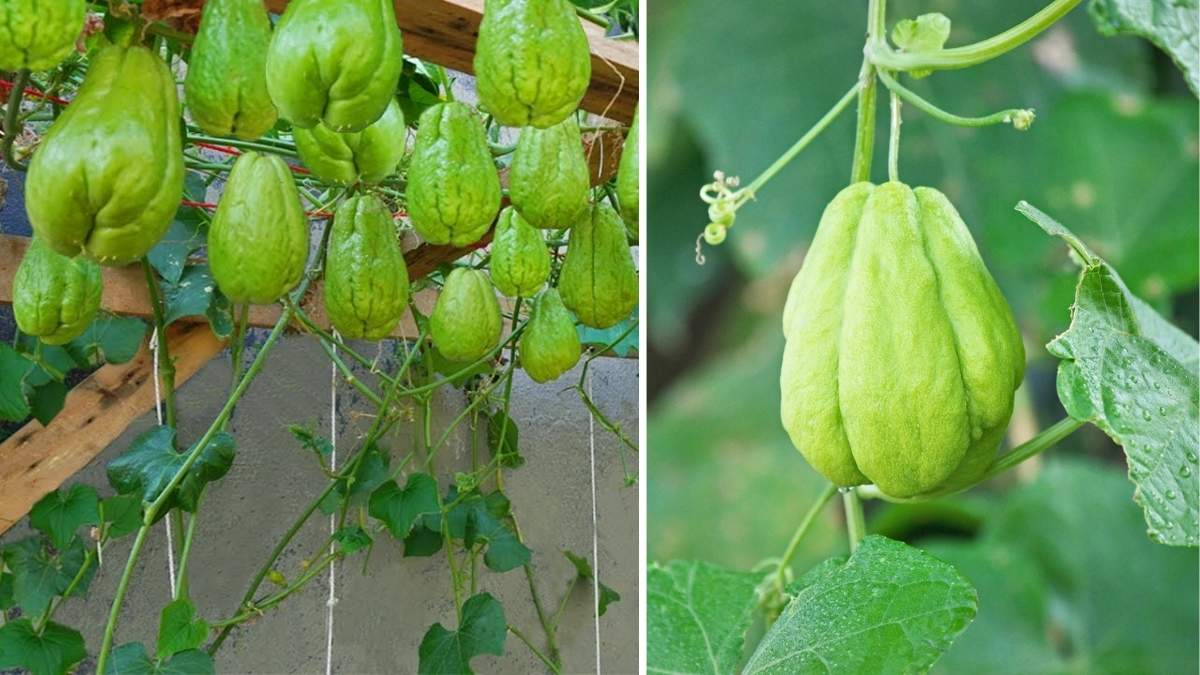Chayote squash, often called vegetable pear, is a versatile and nutritious vegetable that’s a great addition to any kitchen garden. It’s easy to grow, especially if you live in warmer climates, and can be harvested within a few months. In this article, we’ll guide you through the process of planting and growing chayote squash, from choosing the right location to harvesting your crop.
What is Chayote Squash?
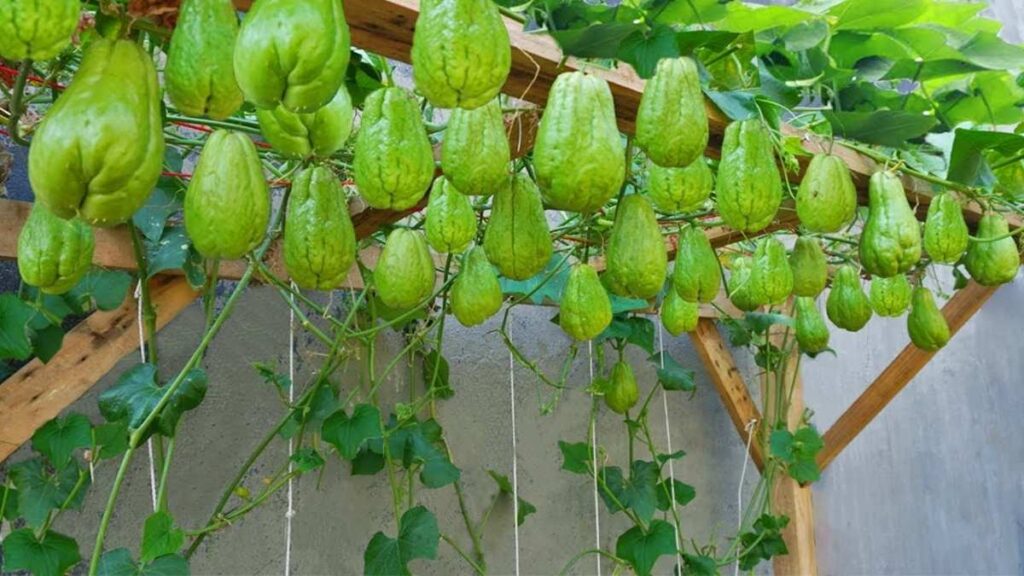
Chayote squash (Sechium edule) is a green, wrinkled vegetable that belongs to the gourd family. It’s not technically a squash, but its taste and texture resemble that of zucchini. Chayote is typically grown in tropical and subtropical regions, making it perfect for gardens with long, warm growing seasons. It’s rich in fiber, antioxidants, and vitamins, making it an excellent addition to your diet.
Choosing the Right Location
Before planting, choose a spot in your garden that receives full sun for at least 6 to 8 hours a day. Chayote thrives in warm temperatures, so it’s best to plant it in late spring or early summer when the soil is well-warmed. The location should also have good soil drainage, as chayote plants don’t do well in soggy conditions.
Chayote plants can grow quite large, so make sure you have enough space for them to spread. If you have limited space, consider growing them on a trellis or using other vertical gardening techniques. This allows the vines to climb, saving precious ground space and making harvesting easier.
Preparing the Soil
Chayote plants prefer rich, well-drained soil that is slightly acidic to neutral (pH 6.0–7.0). Begin by amending the soil with plenty of organic matter, such as compost or well-rotted manure. This will help improve soil fertility and drainage, giving your plants the nutrients they need to thrive.
If your garden soil is heavy or clay-like, consider adding sand or perlite to improve drainage. Additionally, chayote plants require good air circulation, so avoid planting them in compacted or overly wet soil.
Planting Chayote Squash
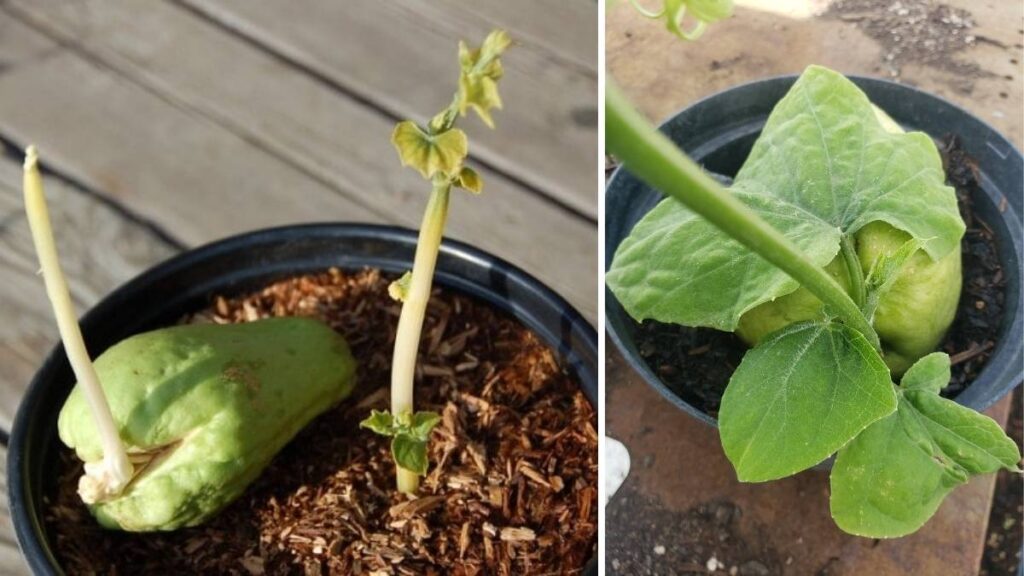
To plant chayote, start with the whole fruit, as it’s often the easiest way to propagate the plant. Select firm, healthy chayotes that are free from blemishes or signs of rot. The planting process is simple, and you can plant chayote either in the ground or in large containers.
When planting in the ground, dig a hole about 3 to 4 inches deep. Place the chayote in the hole, making sure the pointy end is facing up. Gently cover it with soil, leaving the top part of the fruit exposed. If planting in containers, choose large pots with drainage holes. The fruit should be placed about 3 inches deep in the soil, with the top slightly sticking out.
Chayote plants can also be started indoors if you’re in a cooler climate. Simply place the fruit in a shallow dish and let it sprout in a warm, sunny location. Once the sprouts are strong enough, transplant them into your garden or a large pot.
Watering and Care
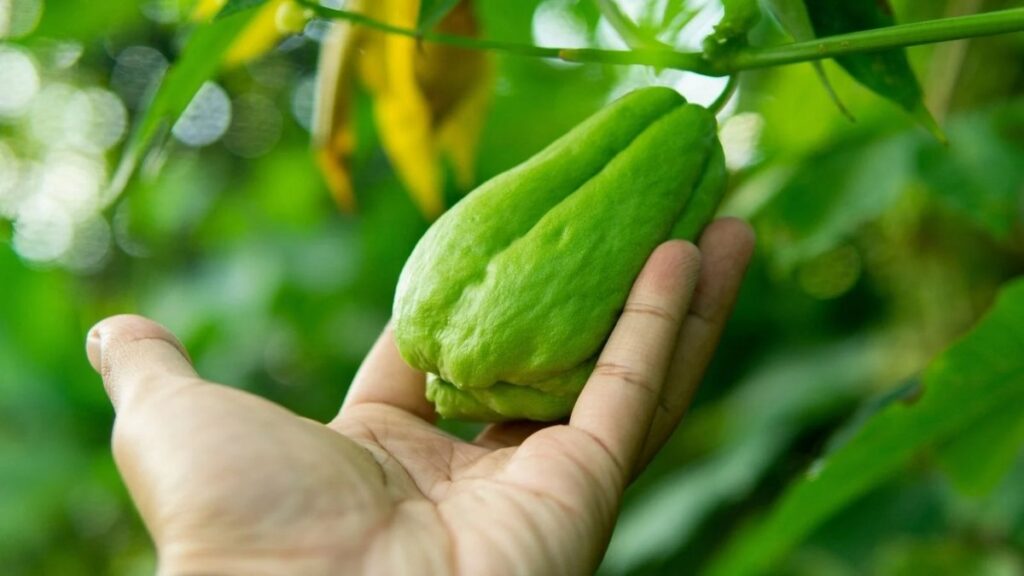
Once your chayote plant is in the ground, regular watering is essential. The soil should be kept consistently moist but not waterlogged. Water deeply to encourage strong root development, especially during dry periods. During the hot summer months, check the soil regularly and adjust your watering schedule accordingly.
Chayote plants also benefit from a layer of mulch around the base to retain moisture, suppress weeds, and regulate soil temperature. Use organic mulch, such as straw, grass clippings, or leaves, to maintain a healthy garden environment.
While chayote plants are fairly low-maintenance, they do need regular care. Fertilize the plants with a balanced organic fertilizer about once a month during the growing season. This will support the development of vines and fruit.
Managing Pests and Diseases
Chayote plants are relatively resistant to pests and diseases, but they are not immune. Keep an eye out for common garden pests such as aphids, whiteflies, and spider mites. If you notice signs of infestation, treat your plants with insecticidal soap or neem oil. Avoid using harsh chemicals, as these can harm beneficial insects and soil health.
In terms of diseases, chayote is susceptible to fungal infections like powdery mildew, especially in humid conditions. Ensure good air circulation around the plants and avoid overhead watering to reduce the risk of fungal growth. If powdery mildew appears, remove infected leaves and apply fungicide as a preventive measure.
Training the Vines
Chayote vines can grow rapidly, and left unchecked, they can spread across your garden. To keep the plants manageable and encourage better fruit production, it’s helpful to train the vines. Use a trellis, fence, or garden netting to guide the vines upward. This not only saves space but also keeps the fruit off the ground, preventing rot and making harvesting easier.
As the vines grow, pinch back the tips occasionally to promote branching. This encourages the plant to produce more leaves and flowers, ultimately leading to more fruit.
Harvesting Chayote Squash
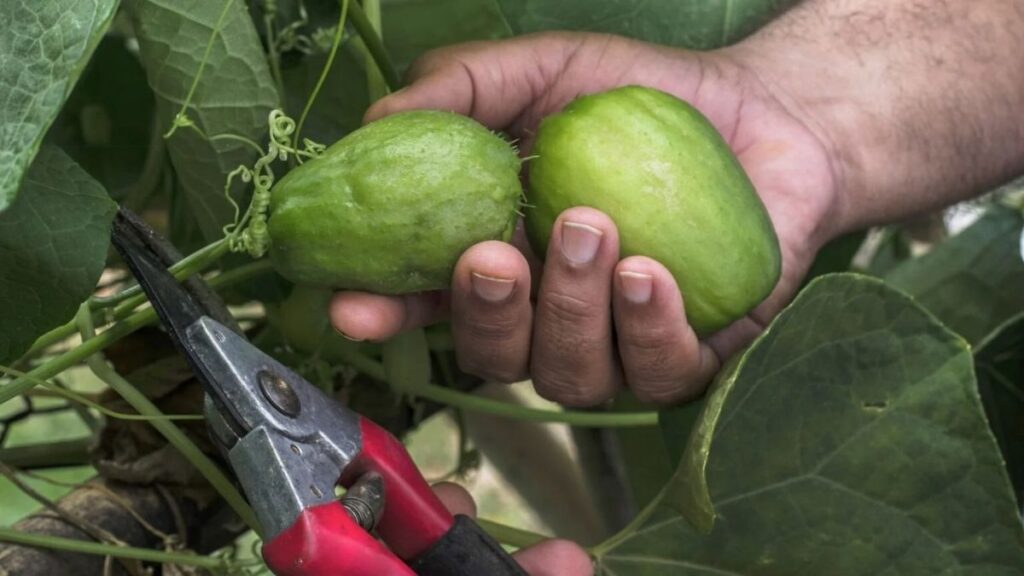
Chayote squash takes about 4 to 6 months to mature, depending on the climate and growing conditions. The squash is ready to harvest when the fruit reaches a decent size and the skin becomes smooth. Chayote can be eaten at any stage of maturity, but for best flavor, harvest it when it’s still tender and green.
To harvest, simply cut the fruit from the vine with a sharp knife or garden shears. Be careful not to damage the vine, as this can reduce the plant’s productivity in the future. After harvesting, you can store the chayote in a cool, dry place for several weeks.
Growing Chayote Squash in Containers
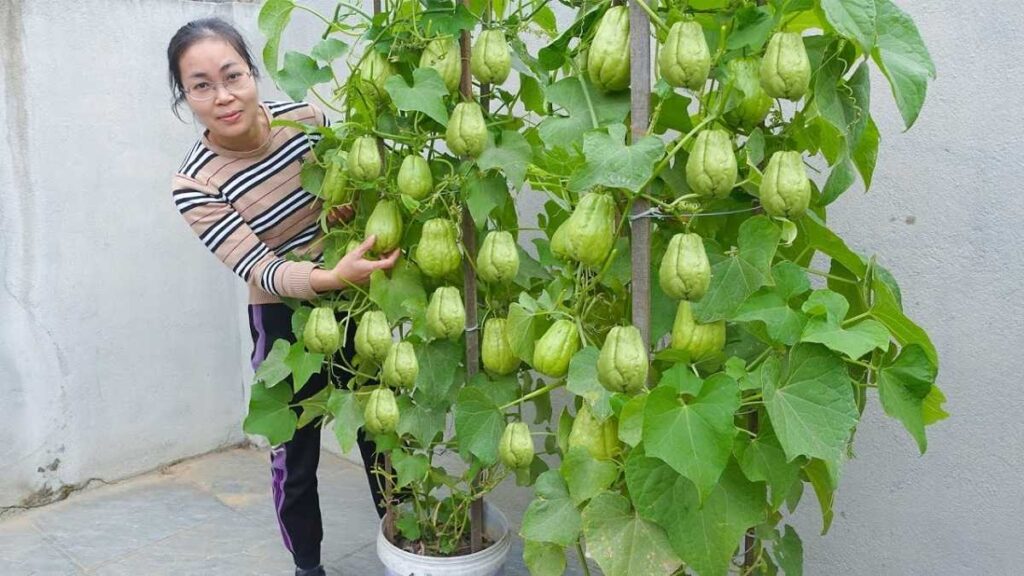
If you have limited space or live in an area with cooler temperatures, you can still grow chayote squash in containers. Choose a large container that can accommodate the plant’s root system, such as a 5-gallon bucket or larger pot. Ensure the container has proper drainage to prevent waterlogging.
Container-grown chayote needs regular watering and fertilizing, just like garden-grown plants. If you live in a cooler climate, you may need to bring the container indoors during colder months or use a grow light to extend the growing season.
Conclusion
Growing chayote squash in your kitchen garden is a rewarding and relatively simple endeavor. With the right care, your chayote vines will thrive and produce an abundance of nutritious fruit. Whether you’re a seasoned gardener or a beginner, planting chayote is a great way to diversify your garden and enjoy fresh produce throughout the year.

